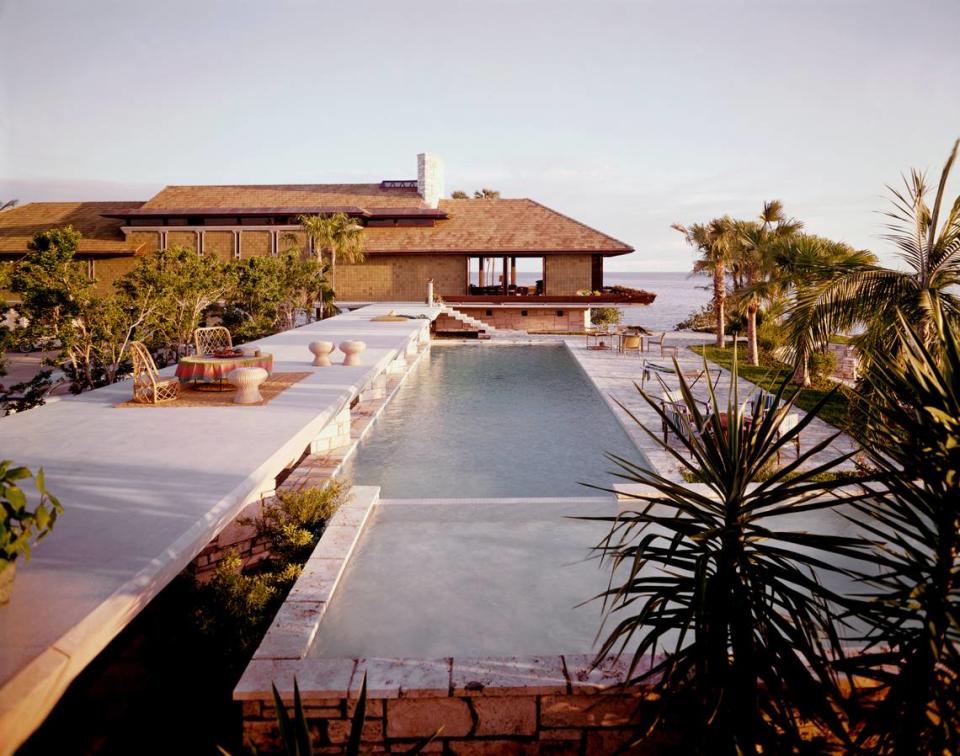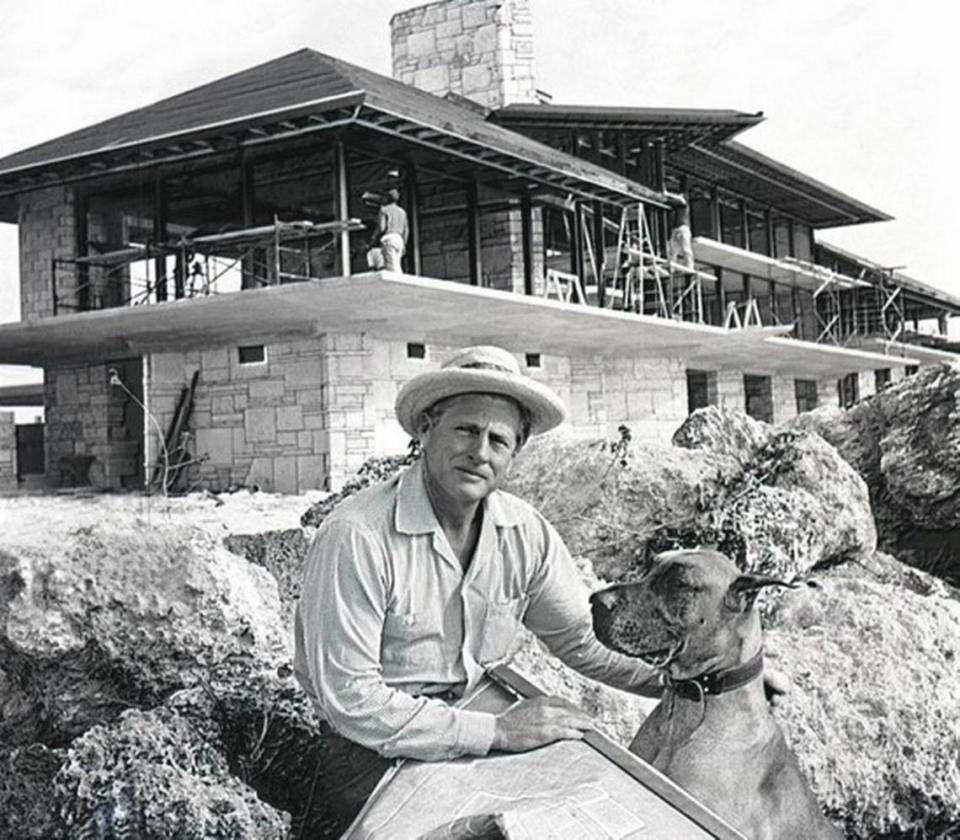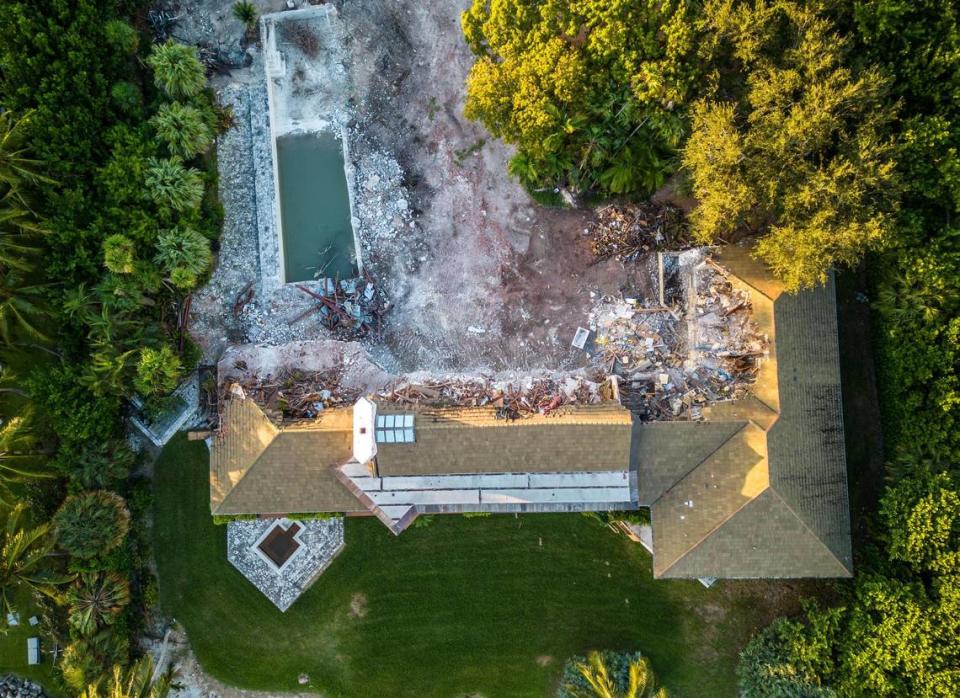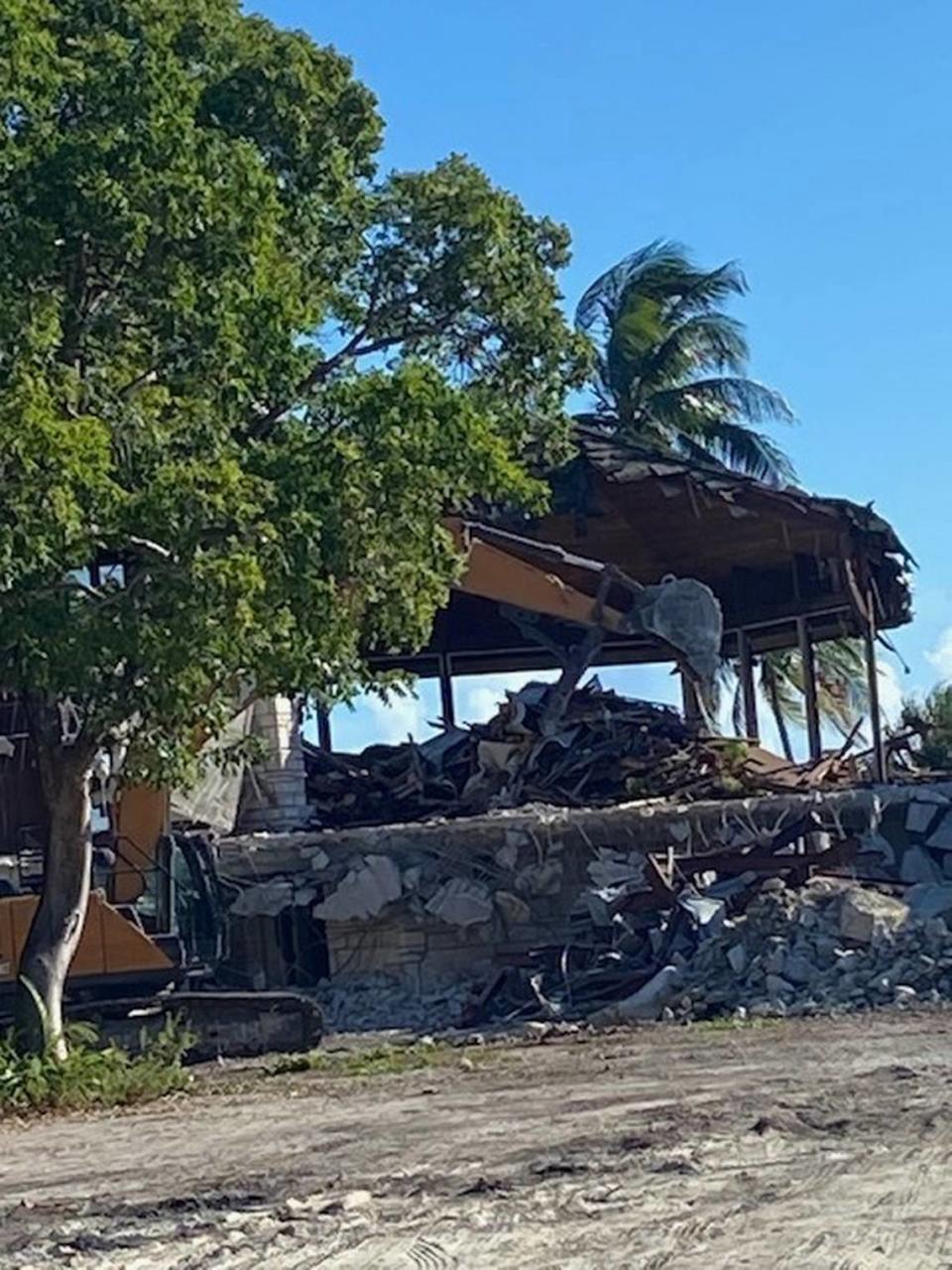Texas mogul razes Coral Gables home considered architectural masterwork
Ignoring pleas from preservationists and architects around the country, a Texas mogul who paid $36 million for a Coral Gables home widely regarded as a modern design masterwork is now in the process of knocking it to pieces.
Backhoes were at work Thursday ripping apart the “Sea Aerie” house designed and built in 1963 by famed Miami architect Alfred Browning Parker for his family in the city’s Gables Estates section. Chunks of limestone lay on the ground by the home’s once-grand gateway, and the panoramic elevated swimming pool and a massive tree that occupied the entry courtyard were gone.
“I know there are a lot of people who are brokenhearted about this,” said the late architect’s daughter, Lebritia Kendrick Parker, who lived in the house as a young girl. “It’s tragic.”

The home’s destruction by a new owner, identified as Felix Sorkin, founder of General Technologies outside Houston, was made possible by a controversial 2022 state law that prohibits local authorities from blocking the demolition of single-family homes in designated high-risk flood zones if they were not previously protected as historic or architectural landmarks.
The demolition comes as Miami’s relentless redevelopment and real-estate speculation claims some of the city’s most prominent architectural and historic landmarks, including ancient archaeological sites. The state pre-emption law that paved the way for the Parker house tear-down also led to the demolition of mobster Al Capone’s Miami Beach estate in August.
Read More: How Florida law allowed demolition of landmark home
Also this week, Miami’s historic preservation board declared a prehistoric indigenous settlement site on the Miami River in Brickell an archaeological landmark, but will also allow the Related Group to build a tower atop it. Related, a major developer, is already building two more towers next door over what’s considered to be the one of the most important and extensive discoveries of ancient settlement in Florida.
The loss of the house also comes a week before a new documentary on Parker’s work that has been picked up by PBS will have its premiere in Gainesville, where the architect studied and taught at the University of Florida. The Gables Estates house is featured in the film.

Officials in Coral Gables, known as a bastion of historic preservation, said the new law tied their hands and compelled them to issue a demolition permit for the Parker house, at 140 Arvida Parkway. The city commission has asked the state legislature to revise the law to permit exemptions in cases of significant homes.
Kendrick Parker said the office of Gov. Ron Desantis did not respond to requests that he intervene to halt the demolition to give the family and preservationists time to attempt to persuade Sorkin to save the house. Neither did Sorkin or his representatives, she said.
Groups from the American Institute of Architects’ Florida and Miami chapters to Docomomo, an international organization that advocates for the preservation of modern buildings, issued letters and statements extolling the home’s architectural value. The AIA chapters in a joint letter called the decision to demolish “incomprehensible as well as unforgivable.”
Read More: An architectural gem was just razed in Coral Gables. See the before and after photos
Sorkin’s response was silence.
“Many letters were written. You would think the courtesy of a reply would have been warranted in a situation like this,” she said. “The big concern is not only that this house is now gone, but there are other homes now in jeopardy.”

Kendrick Parker also blamed the real estate agents who advertised the property as a potential redevelopment.
“The real estate agent who sold it as a tear-down should be ashamed,” she said. “I know they want to make a sale, but there should be a distinction between a sale and something that is a part of Miami’s historic landscape.”
Parker, who designed more than 500 homes and buildings in a 60-year career, was in his heyday regarded as Miami’s answer to Frank Lloyd Wright. The most famous American architect not only inspired Parker’s own “organic” approach to design, which was closely attuned to nature and the environment and sought to harmonize a home or building with its surroundings.
Other houses by Parker in Coral Gables and Miami’s Coconut Grove are designated as protected historic landmarks, but many of his works have been lost to demolition or neglect. Some of his homes in recent years have commanded multi-million-dollar sale prices from owners who have renovated or preserved them.

The Gables Estates home was widely published, praised as one of his most ambitious and fully realized designs. Ironically, it anticipated many of the elements required by modern building codes to contend with hurricane wind and storm surge -- ostensibly the reason behind the state pre-emption law.
All living areas in the three-story main house were elevated above the ground floor, and an open “seaway” and angled support columns were designed to channel surging water through the house. The pool deck was also raised well above ground level.
The home was built under Parker’s direct supervision with lavish use of local and tropical materials like oolitic limestone and Honduran mahogany, with friezes and other artworks built into columns and interior walls.
House Beautiful magazine dedicated its entire May 1965 issue to the house, naming it its Pace Setter Home of the year — a significant honor at the time that Parker had received twice before. The magazine called the home innovative, “lofty” and “heroic.”

The family trust of longtime owner Mary Jean “Bunny” Bastian, a prominent Gables socialite and philanthropist, put the house up for sale after her death last year, initially asking $45 million, before the Texas businessman eventually bought it for $9 million less. Bastian had renovated the home with Parker’s guidance before his death in 2011. Kendrick Parker said she understands the house was in top condition when Sorkin bought it.
Kendrick Parker said she finds some consolation in the fact that the home’s destruction has brought renewed attention to her father’s work.
Along with the Nov. 16 premiere of the documentary “Perfect House, Magic city: The world of Alfred Browning Parker,” the Gainesville Modern preservation group will hold a celebration of his work at a home he designed in the college town. (The home was the location of early rehearsals for the band that would become Tom Petty and the Heartbreakers).
“That’s the silver lining. The house is physically gone,” Kendrick Parker said, referring to the Gables home. “But it will live forever in the documentary and in books and magazines.”



